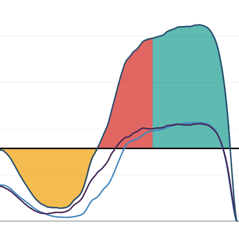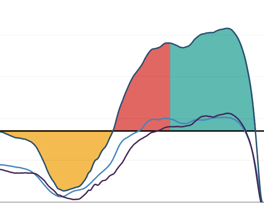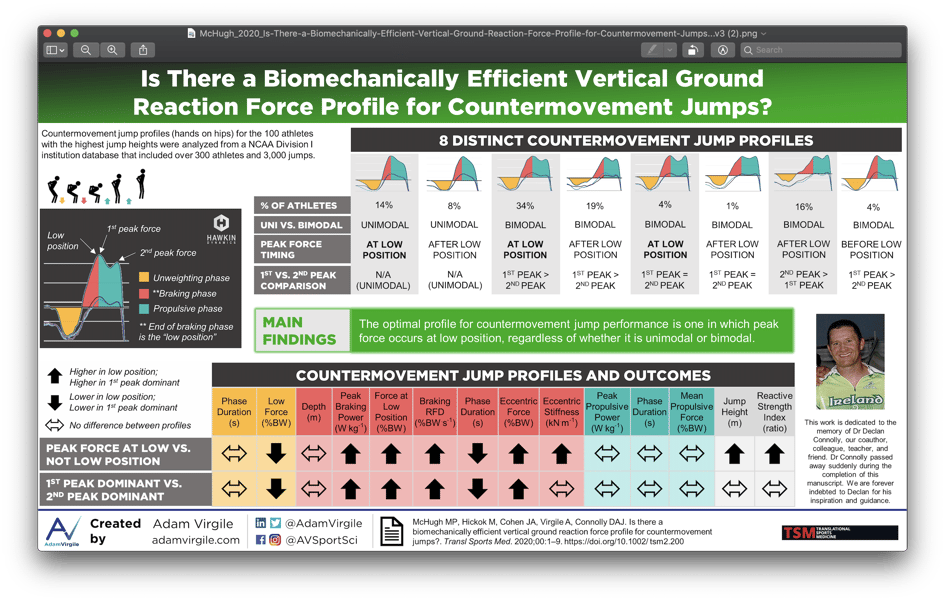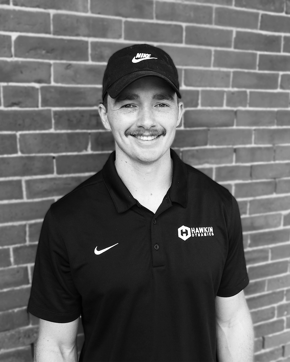A short review of what we think about this article can be found below.
We are pleased to share the work of Adam Virgile and his review of Dr. Declan Connolly's research on the Top 100 Jump Heights from an NCAA Division 1 database which includes 300+ athletes and over 3,000 jumps. These CMJs were completed using "hands on hips" - also known as CMJ-NAS or CMJ Akimbo; which is considered the gold standard for assessing variations in loading patterns & outputs.
The reference article from Dr. Declan can be found here.
Read our takeaways below, and also a description of major points in this infographic.
Bimodal vs. Unimodal Peaks
 |
 |
| UNIMODAL CMJ | BIMODAL CMJ |
The low position for all CMJs is the point with braking (red) transitions into propulsive (green)
Peak force occurs at the highest point along the curve, this varies based on jump strategy.
Peak force can occur in an unimodal curve on either the braking side or propulsive side.
Peak force can occur in a bimodal curve on either the braking side or propulsive side and on either peak.
What is the "Low Position"
The low position of a Countermovement Jump (CMJ) is when Displacement is at it peak and velocity is zero. This would be when the athlete reaches the bottom position of the CMJ. The displacement value can be found in our software labeled "Countermovement Depth".
In this image above "Squat Depth" is what we call "CM Depth". In the reference article & info-graph above they looked at when peak force was produced - and it was found that when force was produced at the lowest point = the higher the jumps in the database.
In the HD Software, we give you the metric "Force at minimum displacement" which you can compare to "Peak Braking Force" and "Peak Propulsive Force" to determine where peak force occurred. You can also see this on the F-T curve image.
Summary
|
A lot can be taken from this article - however, practitioners should take these findings with a grain of salt. Although an athlete displays a bimodal/unimodal curve on Day 1 - that doesn't always mean this is their strategy for every jump. First, establish a jumping protocol and ensure results are repeatable. Second, establish jumping proficiency with each one of your jumpers - from that point, you will also have a solid database to draw conclusions from and identify a jump signature for each one of your athletes.
Taking It One Step Further (Train It)
Once you have determined what an "optimal" jumping protocol is for your sport and population of athletes - the next step is to manipulate "non-optimal" jump signatures to "optimal" jump signatures. This is where force plates become trainable.
Optimal jump signature can be identified at your discretion.
For example, (A) classify your highest jumper as optimal, (B) your best sport performer as optimal, (C) your most elastic athlete as optimal, or (D) what you deem as the most optimal jump signature for your athletes & sport - think about the characteristics of the sport!
If you need help training it, or would just like another set of eyes on your data from our team of professionals - we offer sports science Analytical Advising. We meet you where you're at. We start with a full rundown of what you're doing, and what you hope to achieve by using force plates. We help you meet that goal using our experience in the field. >>Learn more.
Moving Forward (Can We Build On This?)
-
A Bimodal curve is more common, but is a Unimodal curve more biomechanically efficient from an energetics standpoint?
-
Does the shape & impulse of the unweighting phase have an influence on subsequent braking & propulsive shape & impulse?
-
Does a bimodal peak occur because of a possible lower body injury/soft tissue flare-up? Does the location of the double peak tell us anything about location of the flare-up - i.e. anterior/posterior, ankle/hip/knee, etc.
-
The research above showed that force at the lowest position is the most optimal for increasing jump height. Which jump profile would be the most optimal when considering the time constraints of a specific sport? Is peak force at the lowest displacement still optimal?
-
Do different sports yield a different jump signature? I.e. Would hockey players be more likely to exhibit an unimodal curve, whereas basketball would be more likely to exhibit a bimodal curve? Probably, but let's establish it in the research.
-2.png?width=156&height=60&name=Hawkin%20Logo%20(2)-2.png)
-1.png?width=155&height=60&name=WHITE.Horizontal_Logo.Transparent%20(3)-1.png)



